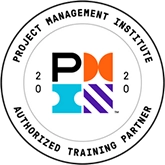Building Successful Alliances Across Divisions
By Maya Townsend, MSOD
Several weeks ago,  a distraught vice president called. His organization had been restructured, and he needed to integrate his new divisions quickly and help them collaborate across divisions. The problem: he had inherited a group of people who didn’t understand why their organization had changed and were struggling to redesign their processes to accommodate the new organization chart. In addition, they were used to working alone and saw no reason to collaborate with their new peers within the organization. The VP had to help them find the way while continuing to raise the performance bar.
a distraught vice president called. His organization had been restructured, and he needed to integrate his new divisions quickly and help them collaborate across divisions. The problem: he had inherited a group of people who didn’t understand why their organization had changed and were struggling to redesign their processes to accommodate the new organization chart. In addition, they were used to working alone and saw no reason to collaborate with their new peers within the organization. The VP had to help them find the way while continuing to raise the performance bar.
This situation is not unusual. We live in a world of change where the only constants seem to be the need to boost performance and collaborate with others. In this highly matrixed, integrated, global environment, there are too few people and too much work for us to section ourselves off from others. We rely on our colleagues to share knowledge, solve problems jointly, provide data and information, and support our work. In return, we do the same.
Yet, collaboration is easier than it sounds. Successful collaboration takes time and focused effort. But, where should you start? Here are some tips on how to build effective alliances across divisions.
Start with the Why. People have a lot to do. If they don’t truly understand the importance of collaboration, they won’t do it. For example, someone might agree with a vague rationale for collaboration, such as “it will improve our customer service.” But that doesn’t give a person the motivation to insist on collaboration and work across boundaries when time becomes tight and deadlines loom. Why take the time for some fuzzy concept that may or not be achieved?
 A much more compelling rationale is that “The X Department works with our customers every day. If we don’t develop close relationships with the department, we’ll never know enough to please our customers.” This rationale lays it all out on the table: what the partner has that is critical, why it is needed, and what consequences come from failing to collaborate.
A much more compelling rationale is that “The X Department works with our customers every day. If we don’t develop close relationships with the department, we’ll never know enough to please our customers.” This rationale lays it all out on the table: what the partner has that is critical, why it is needed, and what consequences come from failing to collaborate.
Coming up with this kind of business rationale for collaboration is the first step in building a successful relationship across divisions. To clarify the business rationale, answer these questions:
- What is at stake for the company and customers if divisions don’t collaborate effectively?
- What does each group have that the other group needs?
- Why are others counting on these groups to perform?
- What could happen if both parties don’t collaborate effectively?
Build Individual Relationships to Build Group Relationships. Simply agreeing to collaborate doesn’t make it happen. Successful collaboration takes time, interaction, and effort.
If an organization needs a powerful synergy between divisions, individuals from both divisions must form strong relationships. This doesn’t happen overnight. Relationships grow when people develop rapport and trust. This comes over time as people learn that they’re both rooting for the Red Sox, have a shared interest in knitting, or enjoy vegetarian food. They learn each other’s styles and preferences, such as one prefers to get right down to business or while the other likes to engage in small talk before beginning work.
All of these understandings lay the foundation for trust in the relationship. Trust is built when people can count on each other to do what they say they will do and to act with positive intentions. The best way to build trust is to be trustworthy. By delivering on commitments, a partner models the way for the two and sets the tone. If a commitment can’t be honored, a simple call to explain the situation, and develop a contingency plan keeps the partnership positive.
Once rapport and trust are in place, individuals find themselves with powerful allies in the other organization. These become people to talk with when organizational politics become confusing, priorities shift, or unique circumstances require special action. There’s an added benefit to developing these relationships across divisions: the most important indicator of job satisfaction is whether people have a friend at work, according to a recent Gallup research study.
Get Specific About Execution. Many people find crafting visions and building relationships to be exciting and engaging. The work of executing visions can be more challenging. Yet, to see a vision through to completion requires a strong sense of discipline. This is an area where many alliances fall short, as they fail to get specific about execution.
Getting specific about execution doesn’t need to be painful. In a meeting with key representatives from both groups, identify the following:
- What are the short-term and long-term goals for the collaboration?
- How will both parties know that the goals have been achieved?
- What process will be put into place in order to support successful completion of work?
- What roles and specific responsibilities will each group perform?
- What are the rules of engagement? In other words, what is the expected turn around time for tasks? For communications?
- How often will groups meet? Who will convene, plan, and facilitate those meetings?
Prepare for the Unexpected. It’s a rare organization that doesn’t get thrown a curve ball once in a while and a rare alliance that clarifies everything as well as it needs to up front. To develop a truly extraordinary alliance, get clear up front about how to handle organizational changes or group misunderstandings. What process will be used to manage through these challenges? What is the escalation procedure?
Take the Time. The final tip for creating successful alliances across divisions is simple, yet seems to challenge many: take the time to make it work. Groups can do this by scheduling periodic off-site retreats to refocus, plan for upcoming work, and resolve any accumulated tensions. Periodic on-site meetings to share best practices, evaluate progress, or identify improvement opportunities can also work well. It’s these ongoing connections, conversations, and commitments that will make an alliance thrive.
For more information on this topic, as well as how Corporate Education Group can help power your organization’s performance, contact us via email or call 1.800.288.7246 (US only) or +1.978.649.8200. You can also use our Information Request Form!




